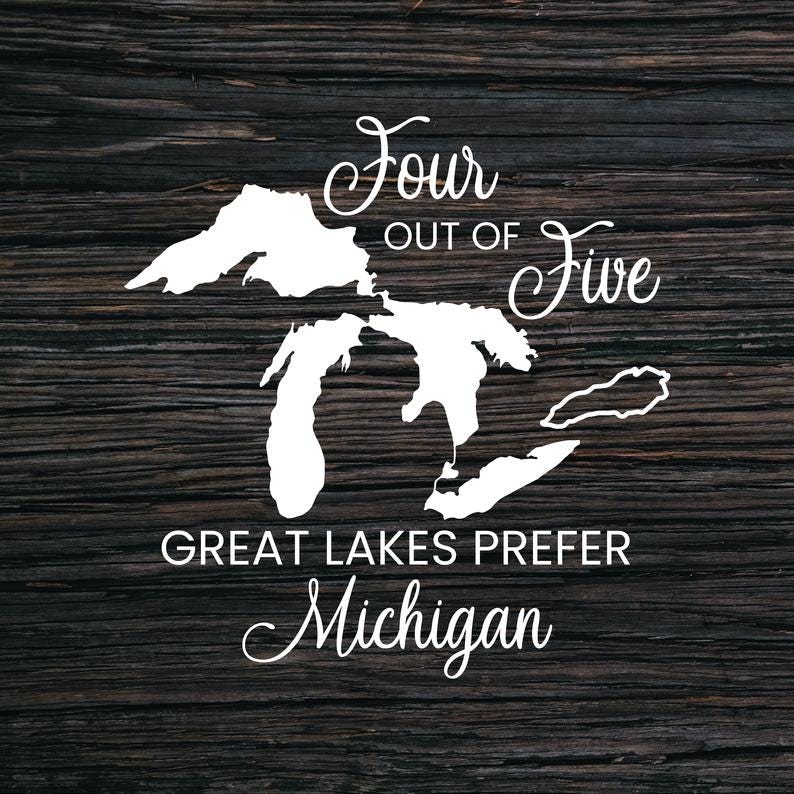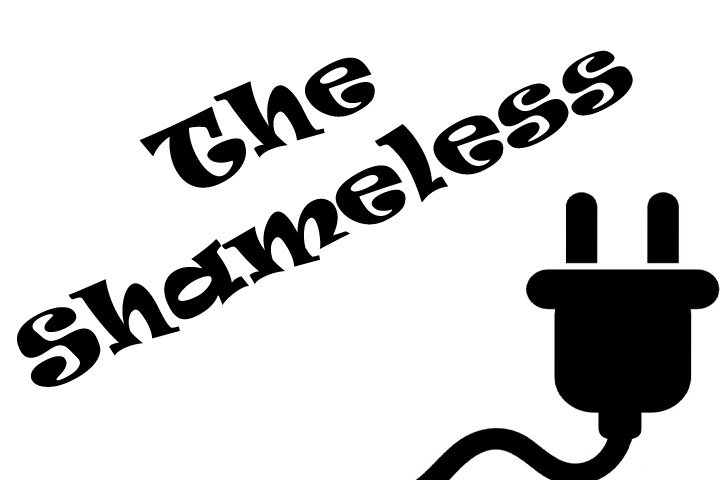Issue #328 Friday Funday May 26, 2023
I remember watching a very interesting series on the History Channel called "How The States Got Their Shape." For this "Friday Funday" series, I am going to publish an article about the "Ten Fun Facts" about each of the 50 states.
OK. That will take a little more than 4 years, but "We Are Speaking" plans to be here for the long haul, and we hope that you, our wonderful subscribers, will be here with us.
Of course, the first state I will highlight is my home state of Michigan!
Michigan, one of the fifty states in the United States, is bordered by four of the five Great Lakes, making it the only state that touches four of the five Great Lakes. Michigan's history dates back to the original indigenous peoples who inhabited the land long before the Europeans arrived. The original indigenous peoples of Michigan were the Ojibwe, Odawa, and Potawatomi tribes.
The name "Michigan" comes from the Ojibwe word "mishigamaa," which means "large water" or "large lake." Michigan has more than 11,000 inland lakes and over 3,000 miles of coastline along the Great Lakes.
These tribes were the first to be encountered by the French explorer Jean Nicolet in 1634. The French established trading posts and forts throughout Michigan, and by the 1700s, the French had a significant presence in the region.
The French were also responsible for giving Michigan its unique shape. In 1763, France ceded Michigan to Great Britain after the French and Indian War. The British then established a boundary between Michigan and Canada that followed the St. Clair River and Lake St. Clair, giving Michigan its distinctive mitten shape.
Michigan became part of the United States in 1783 following the American Revolution, but it wasn't until 1805 that it was officially recognized as a territory. The territorial capital was established in Detroit, which had been founded by the French in 1701. Michigan remained a territory for over three decades until it was admitted to the Union as the 26th state in 1837.
Please make sure to view and act on the important information at the end of this article to help support “We Are Speaking.” Thank you!
Meanwhile, in 1836, after the small Toledo War where Michigan and Ohio tried to claim the area around Toledo, Ohio, President Andrew Jackson implemented a compromise that dictated that Michigan would cede the Toledo Strip to Ohio in exchange for the western portion of the Upper Peninsula.
The historical background and significance of Michigan trading the area of Toledo for the Upper Peninsula can be traced back to the early 19th century, during a territorial dispute known as the Toledo War. The Toledo War was a border conflict between the state of Ohio and the Michigan Territory over the city of Toledo and its surrounding area, which was resolved through a compromise in 1836. The Upper Peninsula provided Michigan with a wealth of natural resources, including vast timber reserves and rich mineral deposits such as copper and iron ore. These resources played a crucial role in fueling the state's rapid industrialization during the late 19th and early 20th centuries, transforming Michigan into a major economic power within the United States.
During the 19th century, Michigan experienced significant growth and development. The discovery of copper and iron ore in the Upper Peninsula led to a boom in mining, while the growth of the lumber industry led to the establishment of sawmills and logging camps throughout the state. Michigan also played a significant role in the Underground Railroad, with many abolitionists helping to smuggle escaped slaves to freedom in Canada.
In the early 20th century, Michigan became known as the "automotive capital of the world" due to the growth of the automobile industry. Companies like Ford, General Motors, and Chrysler were all founded in Michigan and helped to transform the state's economy. The automotive industry brought jobs and prosperity to Michigan, but it also led to environmental challenges, including pollution from factory emissions and the use of leaded gasoline.
Michigan has also been the site of significant social and political events throughout its history. The 1967 Detroit Rebellion, which began as a protest against police brutality, resulted in 43 deaths and over 7,000 arrests. The Rebellion brought national attention to issues of racial inequality and led to changes in policing and urban development in Detroit. In 2014, Michigan became the center of a national debate over the safety and quality of public drinking water when the city of Flint switched its water source to the Flint River, resulting in lead contamination and a public health crisis.
Today, Michigan remains a diverse and vibrant state with a rich cultural heritage. The state is home to a significant Native American population, including the federally recognized tribes of the Grand Traverse Band of Ottawa and Chippewa Indians and the Saginaw Chippewa Indian Tribe. Michigan is also home to a large African American population, particularly in Detroit and other urban areas.
Despite its history of social and political challenges, Michigan has a proud tradition of activism and advocacy. In recent years, the state has been at the forefront of the movement for LGBTQ rights and has seen significant progress in areas like marriage equality and anti-discrimination laws. Michigan is also home to a thriving arts community, with institutions like the Detroit Institute of Arts and the Ann Arbor Art Fair showcasing the state's rich cultural heritage.
Let us know your thoughts about what new information you learned about Michigan in the Substack Notes feature.
You can always leave any questions in the comments or email us.
This article is free to access for 7 days after publication. Please consider becoming a paid subscriber for $5/month or less to access all of the articles and other benefits.
This is your chance to support everything Keith and Pam do. We appreciate you!
Purchase and download your copy of the “Branding And Marketing For The Rest Of Us” eBook for Independent Authors and Creative and Solo Professionals and other valuable eBooks.
Enroll in one of the 6-course bundles designed especially for you: “Author and Book Marketing” and/or “Essential Creative Marketing.”
Purchase your copies of “Detroit Stories Quarterly” issues.
What else do Keith and Pam do?
Where else can you find us?
Click the link below to learn everything you need to know and review everything we offer for independent writers and creative and solo professionals.








